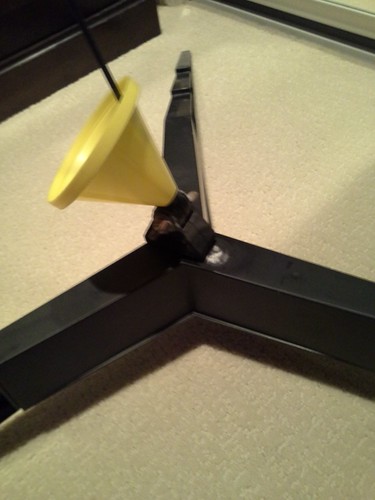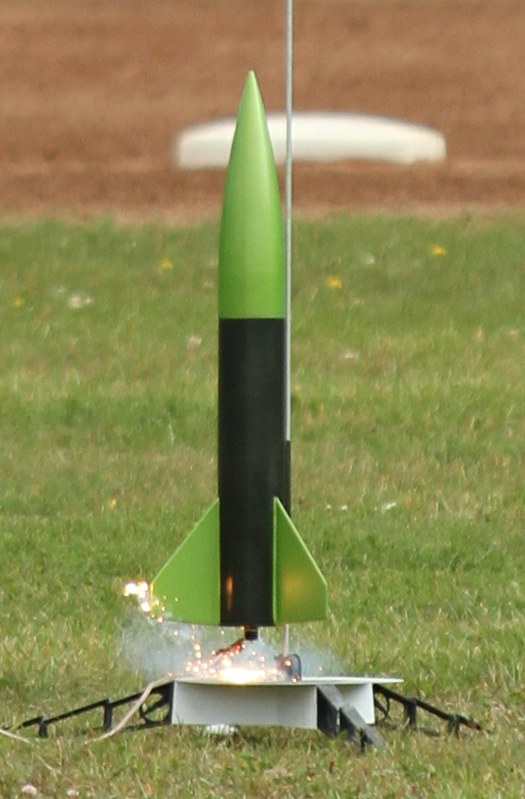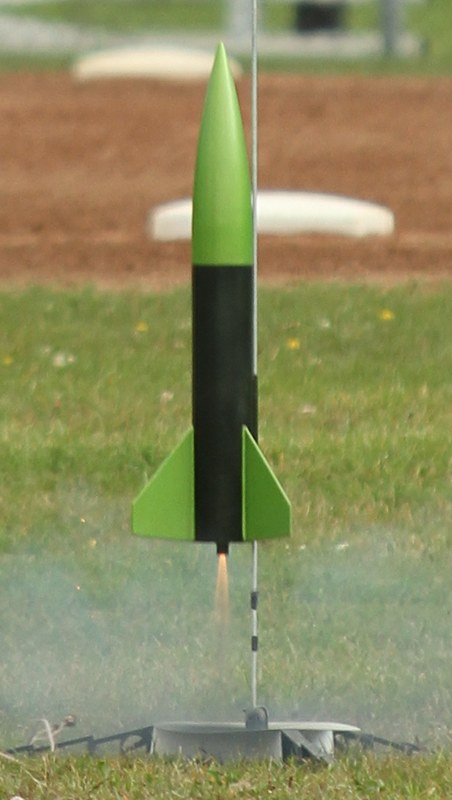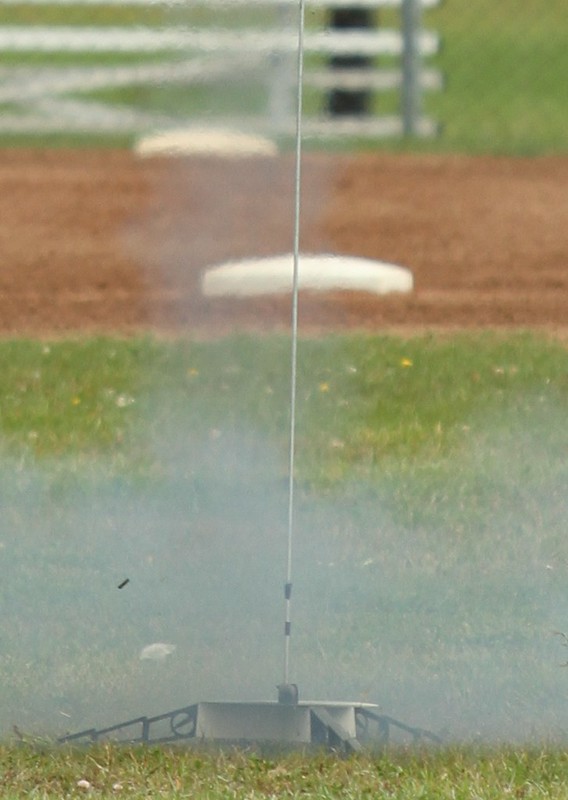- Joined
- Mar 27, 2013
- Messages
- 22,536
- Reaction score
- 14,949
I've experienced problems with the Porta-Pad E (PPE), princeofsin1 has had them... Now I'm thinking that it's a matter of time before one of these fails and causes injury or property damage. I've tried contacting Estes, and I've not heard from them.
The problem is the layout of the design. If it was assembled as per instructions, the swivel (the part that holds the launch rod for those who don't know) is mounted over the blast plate, and the blast plate is mounted in direct contact with the plastic of the hub. This means that the swivel is directly exposed to the heat and flame of the motor at launch, and the thin plastic of the hub is in contact with the hot metal from the blast plate.
Now, I'll admit, I was using an older Porta-Pad II's swivel with my pad at the time I had damage, that was because I was launching smaller D and C powered rockets, but that shouldn't matter. I've used the launcher once with three rockets (read my initial review here). Once, the rocket was centered between two legs of the hub, and although there is a noticeable dent in the blast plate caused by the heat of a C11-3, I'm not worried about the blast plate burning through. However the next two rockets had the motor centered directly over one of the hub's legs. After launching the second one, I noticed a hot/burning plastic smell, and discovered that the hub's leg had suffered some damage (minor) from the heat. In the photo below, the heat damage is visible as a white patch by the swivel (I had painted my hub black to match the legs).

Princeofsin1's experience was much more severe. Due to a suspected nozzle blowout, his rocket stayed on the pad, and the heat and flame of the motor destroyed the swivel, and melted the legs of the hub resulting in his rocket falling over. The pad was actually on fire in the video he was making when it happened.
Blast Plate Photo:

Mangled Hub Photo:

Mangled Hub Photo:

Hub and Blast Plate:

Blast Plate w/Swivel:

My fear is that someone will be launching some day with a PPE in a stock configuration and a booster motor will cato. The motor will melt the legs of the launcher or the swivel, and the rocket will then fall over. Then while the rocket is well below 30 degrees of vertical, the sustainer will ignite sending an E or F powered unguided missile into a crowd of onlookers.
I feel there should be a recall or an alert issued on this. I have now contacted the CPSC with my concerns. How do I make Estes aware of this? (I tried contacting them, but no reply). The fix is simple, the swivel goes below the blast plate. The blast plate is then slid down the launch rod, just like the older (and safer) PPII and BigFoot launchers.
The problem is the layout of the design. If it was assembled as per instructions, the swivel (the part that holds the launch rod for those who don't know) is mounted over the blast plate, and the blast plate is mounted in direct contact with the plastic of the hub. This means that the swivel is directly exposed to the heat and flame of the motor at launch, and the thin plastic of the hub is in contact with the hot metal from the blast plate.
Now, I'll admit, I was using an older Porta-Pad II's swivel with my pad at the time I had damage, that was because I was launching smaller D and C powered rockets, but that shouldn't matter. I've used the launcher once with three rockets (read my initial review here). Once, the rocket was centered between two legs of the hub, and although there is a noticeable dent in the blast plate caused by the heat of a C11-3, I'm not worried about the blast plate burning through. However the next two rockets had the motor centered directly over one of the hub's legs. After launching the second one, I noticed a hot/burning plastic smell, and discovered that the hub's leg had suffered some damage (minor) from the heat. In the photo below, the heat damage is visible as a white patch by the swivel (I had painted my hub black to match the legs).

Princeofsin1's experience was much more severe. Due to a suspected nozzle blowout, his rocket stayed on the pad, and the heat and flame of the motor destroyed the swivel, and melted the legs of the hub resulting in his rocket falling over. The pad was actually on fire in the video he was making when it happened.
Blast Plate Photo:

Mangled Hub Photo:

Mangled Hub Photo:

Hub and Blast Plate:

Blast Plate w/Swivel:

My fear is that someone will be launching some day with a PPE in a stock configuration and a booster motor will cato. The motor will melt the legs of the launcher or the swivel, and the rocket will then fall over. Then while the rocket is well below 30 degrees of vertical, the sustainer will ignite sending an E or F powered unguided missile into a crowd of onlookers.
I feel there should be a recall or an alert issued on this. I have now contacted the CPSC with my concerns. How do I make Estes aware of this? (I tried contacting them, but no reply). The fix is simple, the swivel goes below the blast plate. The blast plate is then slid down the launch rod, just like the older (and safer) PPII and BigFoot launchers.
Last edited:






